
by Gideon Marcus
The Loser of the Pack
According to the very latest Science Fiction Weekly (formerly Degler), F&SF has failed to gain readership in the last several years. Contrast this to the steady gains (and 2x readership in general) that Analog has enjoyed.

Van Arnam ascribes this stagnation not to the inherent superiority of Campbell's mag, but the fact that F&SF just can't get the same kind of distribution that the other mags enjoy. The owners of Fantastic and Amazing benefit from having two mags to use as leverage. Fred Pohl has three, sort of. And Analog is put out by Condé Nast, which means newsstands get Analog as part of a larger package including big deal pubs like Vogue.
So the question becomes this: would F&SF score better with the fans if distribution was no longer a factor? In other words, is F&SF a better mag than the rest? Let's look at this month's issue and find out!
Random sample
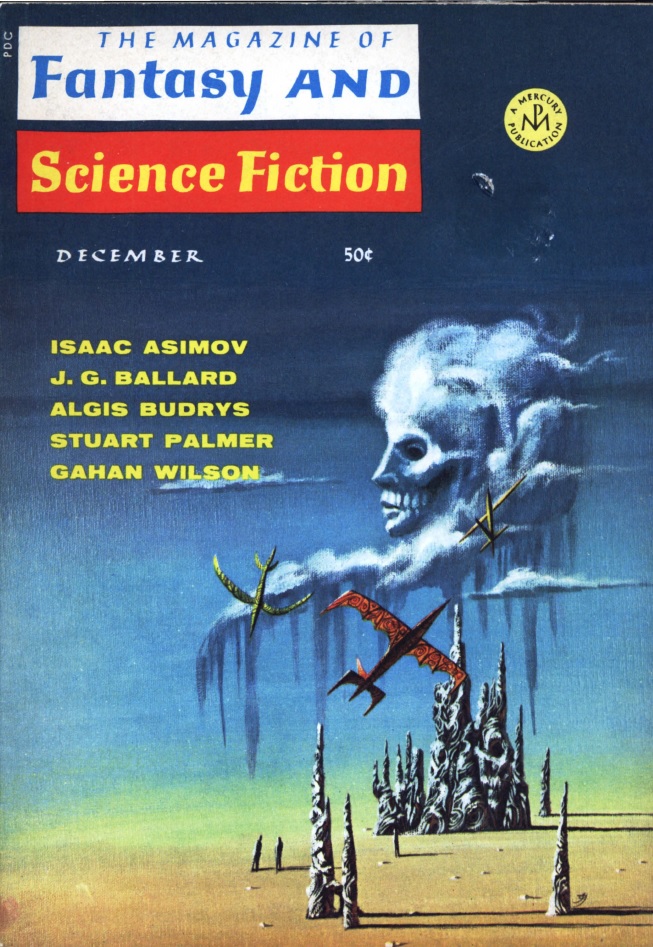
by Jack Gaughan
Sundown, by David Redd
I always enjoy stories that mix magic with technology, and this piece by David Redd does so quite well. The setting is distant world with a steep axial tilt and a long orbit. Thus, for decades of its solar sojourn, whole swaths of the planet are in perpetual day or night.
Humans came to this world and drove away, enslaved, or slaughtered the natives of the northern polar continent when it was in sunlight. They built cities, exploited the land, and in general behaved like the expansionistic menace we so often are. Then the night came again…
As of the beginning of the tale, the dryads, gnomes, fur spirits, oreads, elves, and trolls, have lived in peace for some time, mining the abandoned human colony for metallic treasures under the endless starry night. But the serpent is returning to paradise: Josef Somes, a human from the southern lands, is trudging north in search of valuable "life-rock", and he doesn't care who he has to kill to get it.
The hero of our story is a the White Lady, a dryad. Her companions, a stolid, axe-wielding gnome, two fur spirits, and a cronish oread, form a squad whose mission is to dispatch the human before he can defile the fairy Homeground.
There is a lovely world here, and an unusual storytelling perspective. If the story has any fault, it is the rather prosaic language and somewhat shallow treatment. I feel Thomas Burnett Swann could have raised the material up to five stars.
It's still a fine piece, though, and an excellent opening to the issue. Four stars.
The Saga of DMM, by Larry Eisenberg
The synthetic drug, DMM, is not only the tastiest substance in existence, it is the richest food imaginable. And it's a powerful aphrodesiac. It soon proves more popular than pot, acid, reds, whites, and heroin comined. A wave of fornicative obesity sweeps the world, with catastrophic results.
Pretty frivolous satire. Not really worth your time. Two stars.
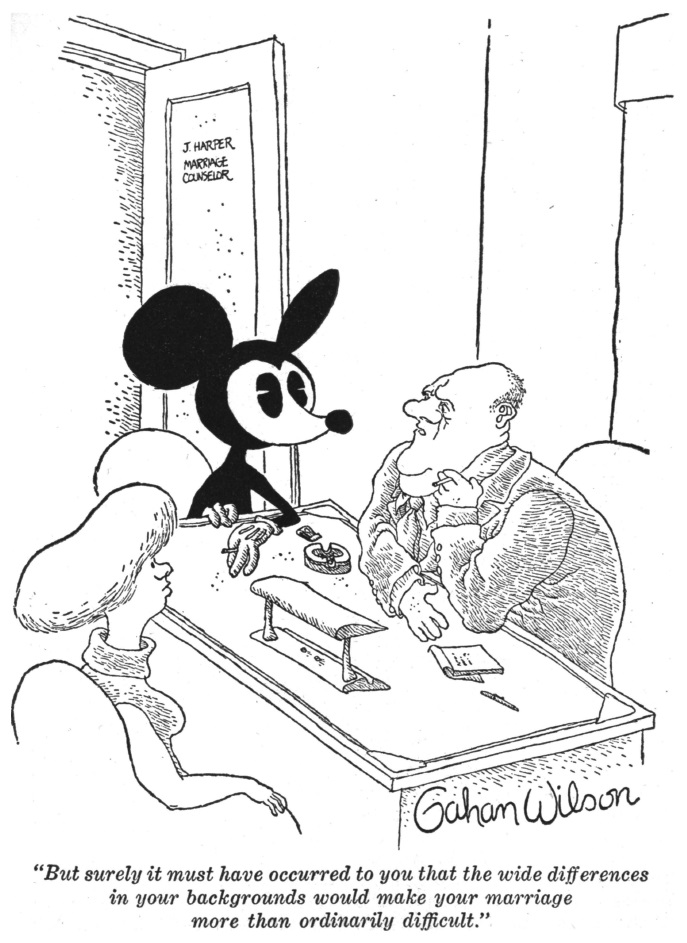
by Gahan Wilson
Brain Wave, by Jennifer Palmer and Stuart Palmer
A male college student is mentally contacted by a comely alien woman from from Alpha Centauri. A friendly correspondence ensues.
I find I have very little to say about this up-front story, which reads like some kind of wish-fulfillment fantasy until the end, whereupon it has a rather silly twist conclusion (that I suppose is meant to be horrific, but it's really not).
"Mildly diverting fluff" covers it. It straddles the 2/3 star barrier, but I think it ends up on the poorer end of the spectrum.
Cerberus, by Algis Budrys
Marty McCay is an amiable ad man, legendary for his mildness. His method for coping with his wife's flagrant infidelities is to tell shaggy dog tales with a punning punchline. In the end, we see that the butt of his jokes was always himself.
There's no science fiction in this tale. What there is, however, is some excellent writing. Four stars.
Noise, by Ted Thomas
In this month's science fact vignette, I thought Thomas was going to propose a sonic weapon. Instead, he outlines the invention of selective ear-plugs that would blot out the bad noise, but admit desired sounds.
One of his better pieces, which is to say, it doesn't stink.
Three stars.
To Behold the Sun, by Dean R. Koontz
The first expedition to the sun is about to take off, crewed by three regular humans and a cybernetic ship-master. Unfortunately, said cyborg is still shellshocked from losing his beloved in a fire several years prior. And what is the sun if not a big ball of fire?
Behold feels as if Koontz read a bunch of Zelazny tales and thought, "I can do this too!" Well, he can't. His writing is hamfisted, the science is silly, and the situation is contrived.
Besides, if they wanted a safe trip to the sun, they should have waited until nighttime…
Two stars.
The Power of the Mandarin, by Gahan Wilson
Wilson not only provides the cartoons for each issue of F&SF, he is also an author. Mandarin is the story of a pulp villain increasingly taking control of his creator's work, ultimately departing from the printed page into reality.
Reasonably well done, and arguably more successful than his drawings. Three stars.
The First Metal, by Isaac Asimov
I rate an Asimov article by its memorability and quotability. The good Doctor's discussion of the earliest knowledge of metals was pretty interesting, and I ended up summarizing the piece to my family on one of our morning walks. The only real fault with the piece is that it would have been well served by a couple more pages.
Four stars.
The Chelmlins, by Leonard Tushnet
A droll piece about how the Jewish version of the Leprechauns helps keep the schlemiels of the Polish city of Chelm from becoming schlimazels. It's the kind of story Avram Davidson might write, though had he done so, it may well have been funnier. Chelmlins isn't bad, but it doesn't quite hit the mark hard enough.
Three stars.
The Cloud-Sculptors of Coral D, by J. G. Ballard
Finally, the latest story in the Vermillion Sands setting. These tales of the rather surreal artists colony tend to be my favorite by Ballard. This particular one involves a troupe of cloud-sculptors: glider pilots who use silver iodide and custom aircraft to create ephemeral images in the sky. They are hired by a bitter widow possessed of extreme vanity, with deadly results.
If you've read one story, you've read them all. They universally involve desolate landscapes, a dreamy sense of time, and have a sour undertone. This was dramatic stuff when Ballard first came on the scene early in the decade, but it's getting a bit played out.
Three stars.
Hung jury
This issue turned out to be a bit of a mixed bag. There are some stand-out pieces and some duds. Most interestingly, we have a several stories that would have been well served by being written by greater talents. On the other hand, rawer authors have to start somewhere, so I'd hate to deny them their chance to improve.
All in all, this issue would probably keep me subscribing, particularly at the discounted holiday rates. I don't know if the quality demonstrated in the December 1967 F&SF would be sufficient to displace other mags for the Best Magazine Hugo, however, even if distribution were not an issue.
It's all academic, in the end. As long as you order directly from the company, it doesn't really matter how many newsstands the magazine ends up on. So tell your friends and get a subscription today. You just might help F&SF outlast all of its competitiors!
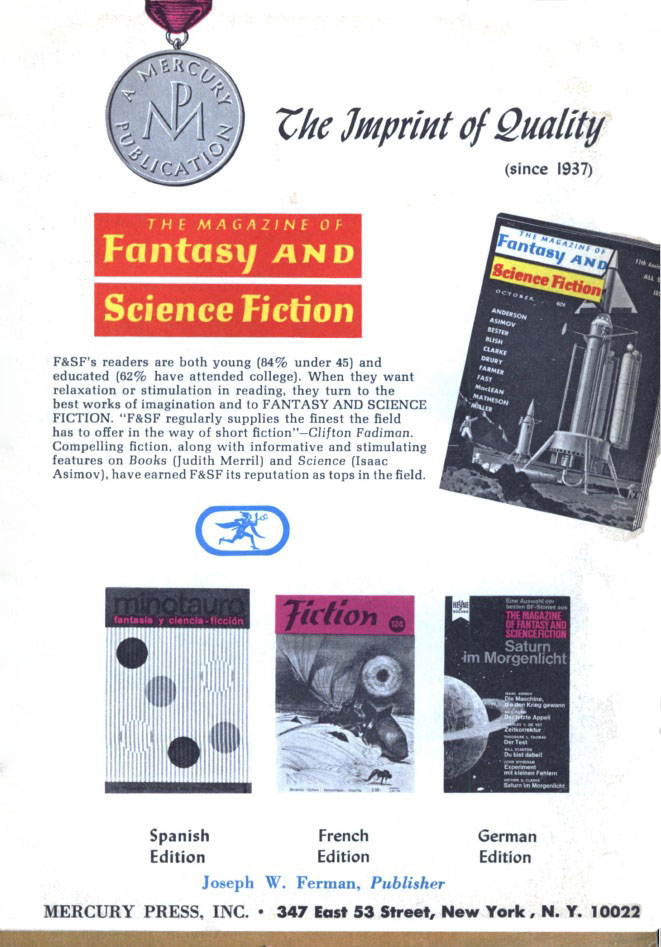
 </small
</small





![[July 12, 1960] The New Generation (August 1970 <i>Fantastic</i>)](https://galacticjourney.org/wp-content/uploads/2025/07/COVERSMALL-672x256.jpg)
![[November 22, 1967] Being #3… (December 1967 <i>Fantasy and Science Fiction</i>)](https://galacticjourney.org/wp-content/uploads/2022/11/671122cover-653x372.jpg)






![[September 18, 1967] Skål! (October 1967 <i>Fantasy and Science Fiction</i>)](https://galacticjourney.org/wp-content/uploads/2022/09/670918cover-672x372.jpg)









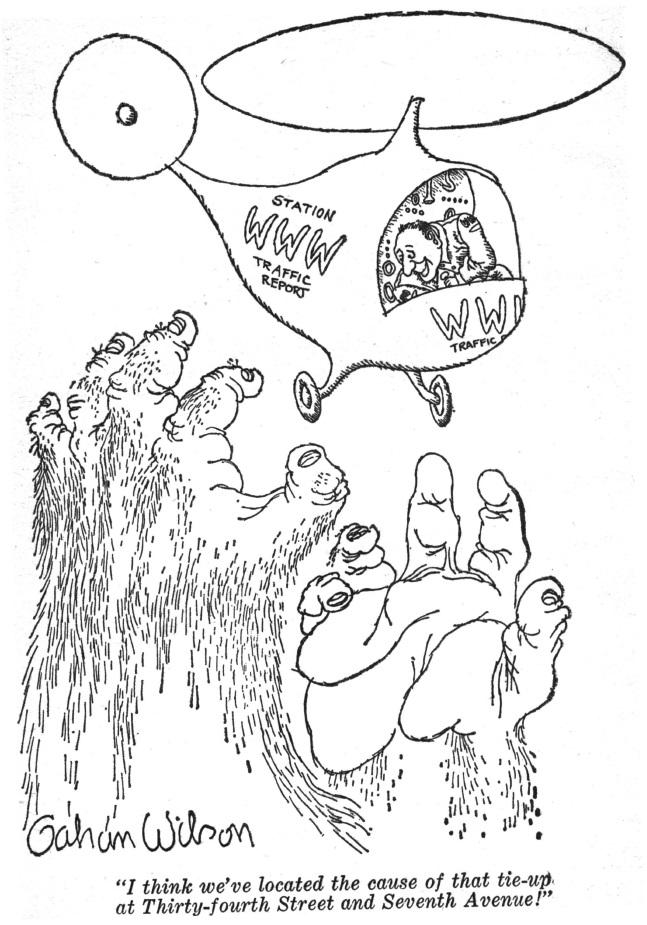
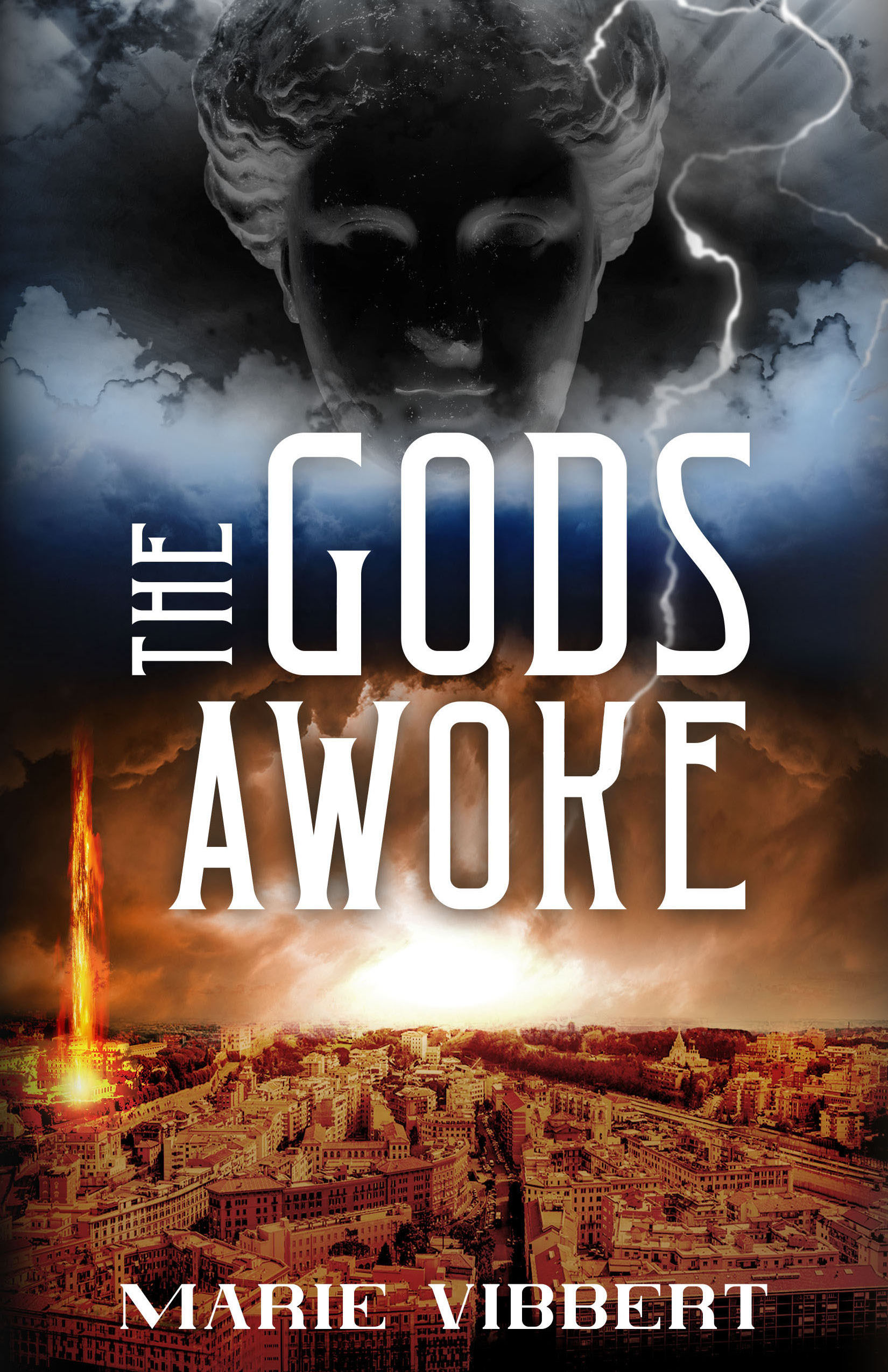
![[September 23, 1963] Small Comforts (October 1963 <i>Fantastic</i>)](https://galacticjourney.org/wp-content/uploads/2018/09/630923cover-541x372.jpg)














